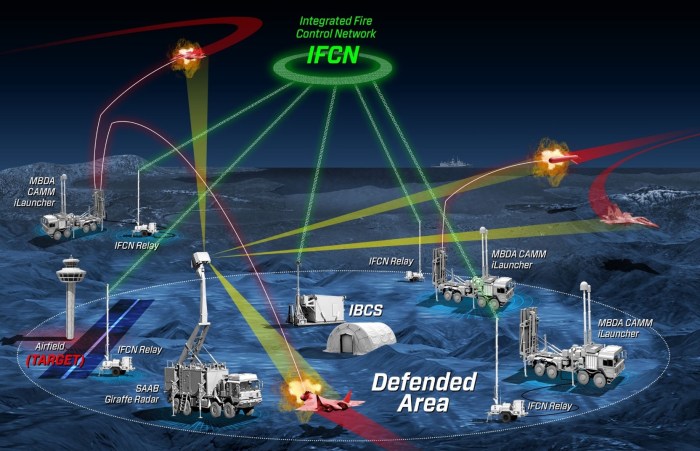Welcome to the intriguing world of the US Canada Defense System Crossword, where we delve into the intricacies of the collaborative defense mechanisms between these two neighboring nations. This article provides a comprehensive overview of the historical, organizational, and technological aspects of this crucial partnership, exploring its significance in safeguarding North America’s airspace and beyond.
The US and Canada have a long-standing history of defense cooperation, with various agreements and organizations governing their joint efforts. One of the most prominent examples is NORAD (North American Aerospace Defense Command), a binational organization responsible for defending the airspace of both countries.
This article will shed light on the structure, technologies, and challenges faced by NORAD in fulfilling its critical mission.
United States and Canada Defense Cooperation: Us Canada Defense System Crossword
The defense relationship between the United States and Canada has a long and storied history, dating back to the 19th century. The two countries have cooperated on a wide range of defense issues, including continental air defense, maritime security, and cyber security.
Key Agreements, Treaties, and Organizations, Us canada defense system crossword
- The Rush-Bagot Agreement (1817): This agreement limited the number of warships that the United States and Canada could deploy on the Great Lakes.
- The North Atlantic Treaty Organization (NATO) (1949): The United States and Canada are both members of NATO, which is a collective defense organization.
- The NORAD Agreement (1958): This agreement established the North American Aerospace Defense Command (NORAD), which is responsible for defending the airspace of North America.
Joint Military Exercises and Operations
- Exercise Vigilant Eagle: This is an annual air defense exercise that is conducted by NORAD.
- Operation Noble Eagle: This is a joint operation that was launched in the aftermath of the September 11, 2001 attacks.
NORAD: North American Aerospace Defense

NORAD is a joint command that is responsible for defending the airspace of North America. NORAD was established in 1958, and it is headquartered in Colorado Springs, Colorado. NORAD is staffed by personnel from both the United States and Canada.
Role and Responsibilities
- Detect and track aircraft and missiles that are approaching North America.
- Intercept and destroy aircraft and missiles that are deemed to be a threat.
- Provide early warning of air attacks.
Structure and Organization
NORAD is commanded by a four-star general who is appointed by the President of the United States. The commander of NORAD is also the commander of the United States Northern Command (USNORTHCOM). NORAD is divided into two regions: the Alaska Region and the Continental United States Region.
Technologies and Systems
NORAD uses a variety of technologies and systems to detect and intercept threats. These technologies include radar, satellites, and fighter jets.
Missile Defense Systems
The United States and Canada have deployed a number of missile defense systems to protect themselves from attack. These systems include the Terminal High Altitude Area Defense (THAAD) system and the Patriot missile system.
Capabilities and Limitations
- THAAD: THAAD is a mobile missile defense system that is designed to intercept ballistic missiles in their terminal phase.
- Patriot: Patriot is a surface-to-air missile system that is designed to intercept aircraft, cruise missiles, and ballistic missiles.
Implications for Regional and Global Security
The deployment of missile defense systems has a number of implications for regional and global security. These implications include:
- Deterrence: Missile defense systems can deter potential adversaries from attacking by making it more difficult for them to successfully launch a missile attack.
- Escalation: The deployment of missile defense systems can lead to an arms race, as other countries may feel the need to develop their own missile defense systems in order to counter the threat posed by the United States and Canada.
Cyber Security Cooperation

The United States and Canada face a number of challenges and threats in the realm of cyber security. These challenges include:
- Cyber attacks: Cyber attacks can be used to disrupt critical infrastructure, steal sensitive information, and spread malware.
- Cyber espionage: Cyber espionage is the unauthorized access to computer systems and networks in order to steal sensitive information.
The United States and Canada have undertaken a number of joint efforts to address these challenges. These efforts include:
- Information sharing: The United States and Canada share information about cyber threats and vulnerabilities.
- Capacity building: The United States and Canada provide training and assistance to each other in order to improve their cyber security capabilities.
Importance of Collaboration
Collaboration between the United States and Canada is essential for protecting critical infrastructure and national security. By working together, the two countries can better detect, prevent, and respond to cyber threats.
FAQs
What is the primary objective of NORAD?
NORAD’s primary objective is to defend the airspace of the United States and Canada from potential air attacks, including missile threats.
What are the key challenges in cyber security cooperation between the US and Canada?
The key challenges include addressing cyber threats, protecting critical infrastructure, and fostering information sharing and capacity building to enhance collective cyber resilience.